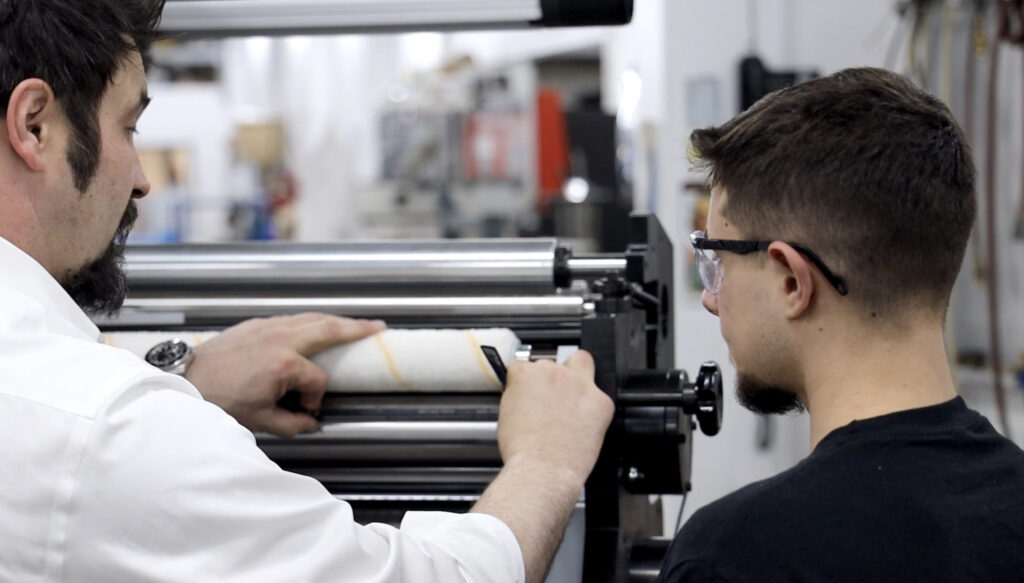The era of magnetic stripe (magstripe) cards is coming to an end. As technology advances, the limitations and vulnerabilities of magstripe cards are becoming more apparent. Explore the transition from magstripe cards to RFID (Radio-Frequency Identification) cards, understand the benefits, applications, and how Tamarack’s advanced RFID inlay insertion equipment facilitates this shift.
The Decline of Magnetic Stripe Cards
Limitations of Magstripe Cards
Magstripe cards have been a staple in various industries for decades, but they come with significant drawbacks. One of the primary issues is security. Magstripe cards are highly susceptible to cloning and other fraudulent activities. The data stored on the magnetic stripe can be easily copied, leading to unauthorized access and financial losses.
Additionally, magstripe cards suffer from physical wear and tear. Frequent use can damage the magnetic stripe, rendering the card unusable and necessitating frequent replacements. This not only incurs additional costs but also causes inconvenience for users.
Industry Shift
Given these limitations, many industries are shifting towards more secure and reliable solutions. RFID technology is gaining traction as a superior alternative. Industries such as manufacturing, hospitality, and access control are gradually phasing out magstripe cards in favor of RFID cards, driven by the need for enhanced security and better user experiences.
Understanding RFID Cards
RFID cards utilize radio-frequency identification technology to store and transmit data. An RFID card typically contains a microchip and an antenna embedded within the card. When the card comes into proximity with an RFID reader, it transmits the stored data wirelessly. This technology allows for contactless communication, making it both convenient and secure.
Advantages of RFID Cards Over Magstripe Cards
RFID cards offer several advantages over traditional magstripe cards:
- Enhanced Security Features: RFID cards use encryption to protect stored data, significantly reducing the risk of cloning and unauthorized access.
- Greater Durability and Longer Lifespan: Unlike magstripe cards, RFID cards are less prone to physical damage and wear, resulting in a longer lifespan.
- Contactless Convenience: RFID cards enable quick, contactless transactions, improving user experience and efficiency.
Key Benefits of RFID Cards
Improved Security
RFID cards provide robust security features that magstripe cards lack. The data on an RFID card is encrypted, making it difficult for unauthorized individuals to access or clone the information. This enhanced security is particularly important in industries where data protection and access control are critical.
Enhanced User Experience
The contactless nature of RFID cards offers a seamless user experience. Users can simply tap or wave their card near a reader to complete a transaction or gain access. This ease of use reduces transaction times and minimizes the physical wear on the cards, leading to fewer replacements and maintenance issues.
Operational Efficiency
RFID technology streamlines various processes across different applications. For instance, in hotels, RFID key cards allow guests to check in and access their rooms quickly, improving overall guest satisfaction. In banking, RFID cards facilitate faster transactions, reducing wait times and enhancing customer service. The operational efficiency gained from using RFID cards translates to cost savings and improved service delivery.
Implementing RFID Card Systems
Steps to Successful Implementation
To successfully implement RFID card systems, organizations should start by assessing their specific needs and requirements. This includes determining which applications will benefit from RFID technology and selecting the appropriate card design. Working with experienced partners like Tamarack can help ensure that the chosen solutions meet regulatory standards and operational requirements.
Overcoming Common Challenges
Implementing RFID technology comes with challenges, such as ensuring compatibility with existing systems and achieving user acceptance. Addressing these challenges involves integrating RFID systems with current IT infrastructure and providing adequate training for staff and users. Proper planning and communication are essential for a smooth transition.
Measuring Success
To measure the success of RFID card systems, organizations should monitor key performance indicators (KPIs) such as transaction speed, reduction in fraud incidents, and improvements in operational efficiency. Continuous monitoring and optimization based on collected data can help organizations refine their RFID card systems and achieve better results over time.
Tamarack’s MVW Inline RFID Inlay Insertion Equipment
Tamarack® offers advanced solutions to enhance the production of RFID cards with its MVW Inline RFID Inlay Insertion Equipment. This equipment integrates RFID technology into cards with high precision and efficiency. Designed for high-speed operations, the MVW system ensures accurate inlay insertion, making it ideal for various applications.
RFID cards offer significant advantages over magstripe cards, including enhanced security, improved user experience, and operational efficiency. The transition to RFID technology is gaining momentum across various industries, driven by the need for better security and convenience.
Businesses must explore the benefits of RFID cards to stay competitive and ensure security. RFID cards help achieve greater efficiency and security in managing your card operations. Contact Tamarack to learn more about our advanced RFID insertion solutions and how they can enhance card systems.





